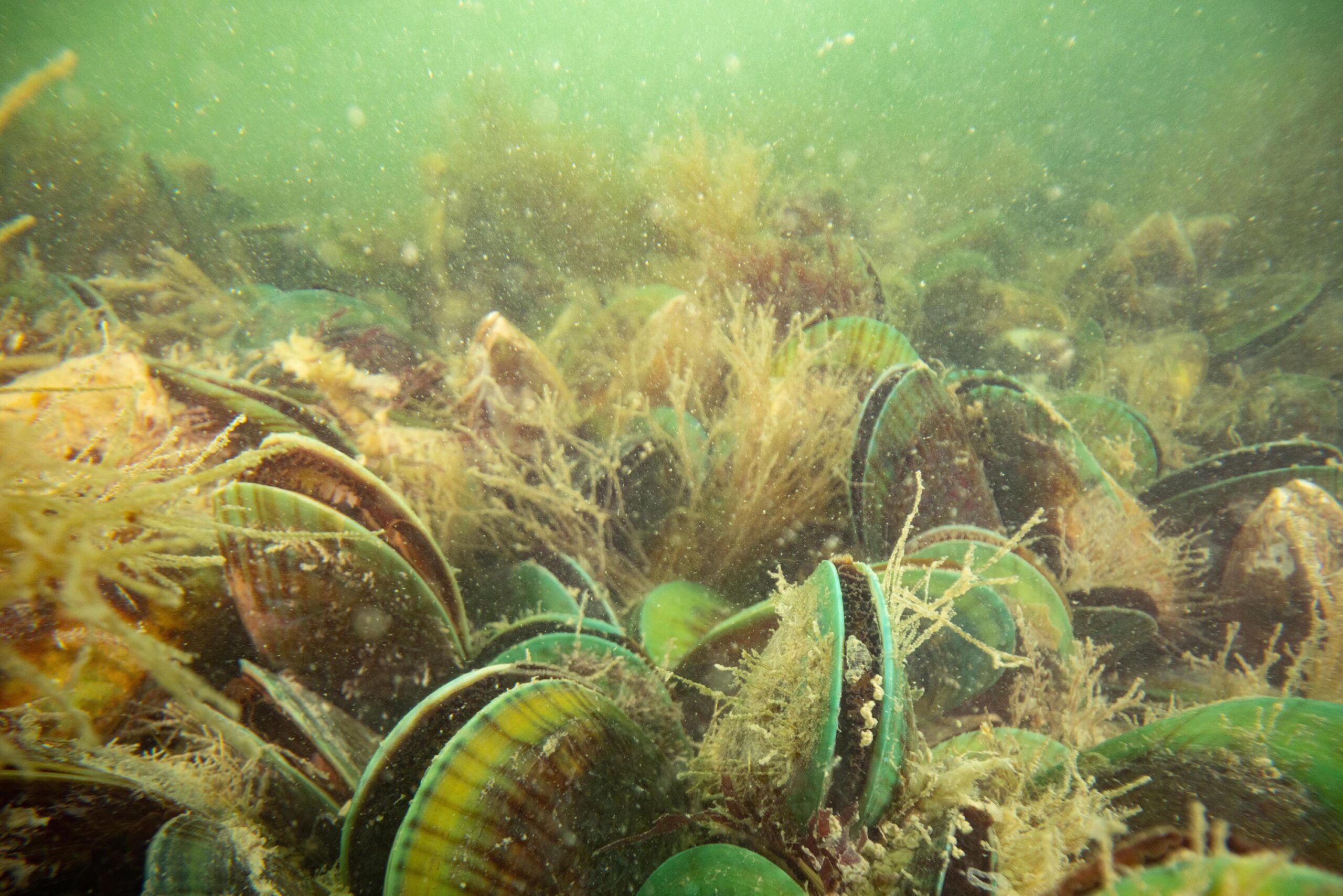
Tāmaki Makaurau – They’re tiny, invisible to the naked eye and they may hold the missing piece to an environmental puzzle in Auckland’s blue backyard.
Tens of thousands of spat or baby mussels have been making their way in a chilly-bin from a commercial hatchery in Nelson to Kelly Tarlton’s aquarium in Tāmaki Makaurau for a new life in the big city.
Their mission is to help restore Tīkapa Moana / Te Moananui-ā-Toi – the Hauraki Gulf back to its former abundance.
Right now, the bottom of the gulf in large parts is a sludgy, gloopy mess of mud and sediment. Ask any diver.
It wasn’t always like that. At the turn of the 20th century the inner Hauraki Gulf was carpeted with over 600 km2 of mussel beds, the equivalent of 80,000 rugby fields.
Last century people started dredging the beds to harvest mussels to eat that peaked in the 50’s and 60’s, amazingly they ate the lot without understanding the consequences.
Mussels/kūtai are ecosystem heroes. They clean the seawater, provide structure, protection and accommodate baby fish, species like tāmure/snapper so sought after as kai moana.
Without kūtai beds and along with other pressures resulting from the burgeoning biggest metropolis, the marine ecosystem of the Hauraki Gulf took a big hit.
Non-profit group Revive our Gulf is trying to re-mussel Tīkapa Moana.
So far they have deployed 370 tonnes of kūtai in two experimental projects around the Gulf.
They have iwi and scientists, conservationists and volunteers working hard to try and figure out how they can do this at scale.
What’s obvious is that they need to enable nature to get in behind their efforts to bring back the mauri, the essence of this magical stretch of water.
And that’s where these little guys, the mussel spat, come in.
These tiny underwater fledglings – that float around, eventually making shells and growing into kūtai.
One of the deep scientific mysteries of this mahi is why the kūtai haven’t come back naturally on their own, after almost being wiped out entirely last century, despite all the mussel farms dotted around the Gulf.

